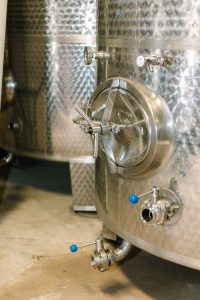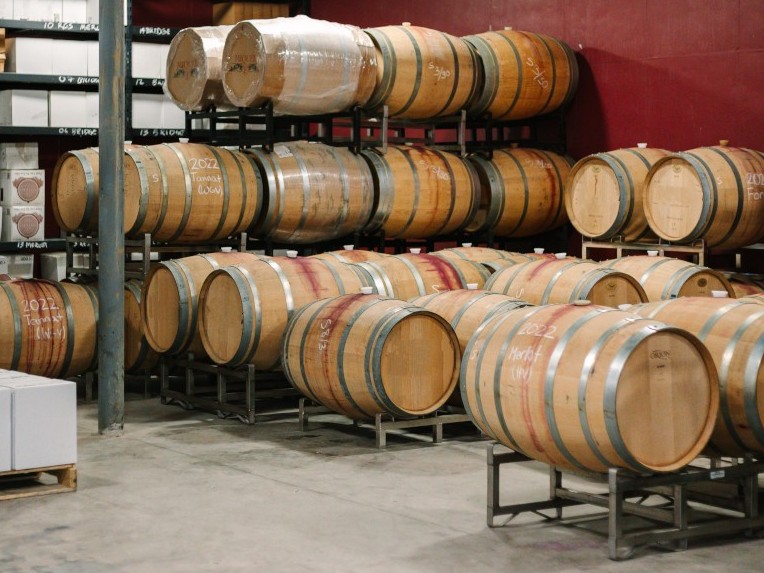
The post-harvest lull, for many, can feel like a short reprieve in the cellar. However, post-processing is when real winemaking operations begins! There are many requirements in the cellar that still demand the winemaker’s attention. Today, I’m going to review a few key operations that require focus between November and December.
1. Ensure MLF is Complete
I talked a lot about malolactic fermentation (MLF) in the last month or so. (Please read the November 2024 Winemakers’ Blog for tips on completing MLF.) During the months of November and December, it’s important to ensure those wines going through MLF have completed the fermentation. The wine is considered dry for MLF when the malic acid concentration is under 0.1 g/L. The only way to confirm this is through an analysis that can measure the malic acid concentration directly.
It’s a good idea to make sure MLF is complete if the winemaker and/or cellar staff are planning any pending vacations for the holidays. If wines undergoing MLF are left unattended to for any prolonged length of time, they are in a rather vulnerable state (i.e., higher cellar temperatures, no protection with SO2). Thus, this can be the time when the wine spoils from other microorganisms natural to the wine, like acetic acid bacteria.
2. Adjusting SO2 for Wines in Storage
Once the fermentation(s) is/are complete, one of the best practices for wine storage is managing SO2 concentrations. November is the time to check what SO2 additions were made in the winemaking records. Perhaps, winemaking records need updated, too! Winemakers should also confirm those additions were adequate by actually checking the free SO2 and total SO2 concentrations for each wine, and ensure the proper molecular concentration is reached based on the wine’s pH. Do not assume that an SO2 addition fully goes and stays into the free form of sulfur dioxide.
SO2 adjustments should be made, as necessary, through these winter months. If an adjustment is made, it’s relatively good practice to check the free SO2 and total SO2 about 48 hours after an addition. This is to ensure that the new addition was adequate, as described above.
If this practice does not sound normal to you, please review the Winemaking Lesson, “Demystifying SO2” for why this is an important process. DGW Members and Clients can access this lesson by logging into the website.
3. Post-Harvest Review
If you haven’t done so already, taking the time to review the harvest season at its close is usually recommended. Over the months of December and January, a lot will be forgotten, and some of that information lost is essential for adequate preparation in the next vintage year.
If you are reading this blog post, you can download and use my Post-Harvest Review Checklist, here. This checklist not only provides necessary tasks to do in the cellar now, but it also reminds winemakers to have a meeting with cellar staff before the holiday season starts, making sure to account for all the challenges and problems that came up during harvest. Furthermore, it’s a good idea to take note of what went well during the harvest season so those actions can be repeated next year.
Here are a few challenges I see many wineries face each year, and now is a great time to brainstorm some potential solutions, as well as action items for dealing with that challenge, for the next harvest season.
- Damage to bladder presses
- Equipment failures (and lack of technical expertise for repairs) including issues with pumps and forklifts
- Out of stock items (e.g., AimTabs, nutrients, analysis chemicals)
- Running out of ingredients (e.g., sugar, tartaric acid) during the crunch time of harvest
- Employees needing time off due to personal issues or illness
- Equipment inadequately prepared for harvest (e.g., equipment not previously cleaned/sanitized or equipment not removed from storage before it was needed)
- Shipping delays
- Inadequate processing aids and ingredients inventory for making wine
- Difficult grape delivery logistics
- Lack of tank storage
In the past, I’ve discussed some of these challenges. For example, to compensate for shipping delays and a lack of inventory supplies, I usually remind DGW Members and Clients 1 – 3 months prior to the start of harvest to start planning out inventory needs. Receive shipments for these supplies before harvest starts.
For ingredient items like sugar and acid, knowing what businesses stock these supplies locally is a big help. Have a log with phone numbers and addresses with stores that can provide these ingredients.
The point is that having solutions before harvest happens can save a lot of stress, chaos, and money in the long run. While this may not seem significant, the number one stressor to every operation that I work with or hear about is having too much to do during the harvest season. Eventually, everyone gets too tired to keep operating at their usual capacity. Thus, any way to reduce the work load or decision-making processes during the harvest tends to be valuable time spent.
4. Bottling Preparation
Essentially, I look at most winemaking operations after harvest as bottling preparation. Everything from cold stability through filtration looks like a pre-bottling step to me!
DG Winemaking simplifies the requirements for the pre-bottling process in the following timeline-checklists:
Each checklist not only lists out the order of operations, but it also explains key details and adequate time requirements for each operational step.
The point to these checklists is to take out the variability in bottling operations. Believe it or not, but switching up operational order before bottling becomes quite common for so many winemaking operations. But it shouldn’t be that way. Bottling and pre-bottling operations should be somewhat repeatable the way that harvest operations are repeatable.
The timeline, and often, the time required for each step, is fairly straightforward. Author’s Note: While I know some wineries will rush wines through bottling in December through February, these Checklists are designed for a more normal April through June bottling time frame.

Photo by: Savannah Smith Photography
The Cellar is a lot of Work
It’s often joked that making wine is easy. But the hard work associated with making high quality wine, and making good winemaking decisions, is usually within this post-harvest, pre-bottling portion of the year. While I know many will begin to focus on vineyard work, it’s important to remember that your cellar actually requires routine monitoring year-round. Sometimes, keeping up with those requirements is simply knowing what needs to be done and when it needs to be done by.
Happy post-harvest season!
The views and opinions expressed through dgwinemaking.com are intended for general informational purposes only. Denise Gardner Winemaking does not assume any responsibility or liability for those winery, cidery, or alcohol-producing operations that choose to use any of the information seen here or within dgwinemaking.com.
